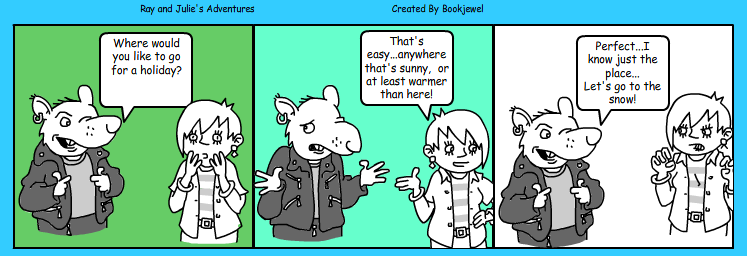My Web 2.0 journey began exactly a year ago, inspired by a few questions at a professional development activity and fuelled by my own desire to understand ‘what all the fuss was about.’
As a way of celebrating this milestone I thought I’d revisit the key discoveries of the past year. My journey was an informal one, with many paths and many lingering visits along the way. This blog was my starting point.
Blogging:
One of the first things I did after starting this blog was to explore the amazing array of quality blogs out there. Many inspired me to develop and maintain the best quality blog I could with my limited talent and experience.
CogDogBlog by Alan Levine proved an excellent starting point. From there I found the wiki and a list of story tools which fuelled my journey for weeks. I used many of them in my early blog entries and still love the simplicity of tools such as toondoo, slideshare and animoto.
Teacher-Librarian blogs:
As a qualified teacher-librarian I was keen to learn what I could from the online experts in the field. One of the first gems I found was an Edublogs award winner, A Library by Any Other Name. I learned about the 23Things Web 2.0 activitiy via this blog and followed it to learn more on my own.
This blog also led to another Edublogs winner, this time a fellow Australian, Judy O’Connell, who maintains the Hey Jude blog. Judy seems to have an amazing capacity for ‘thinking outside the square’ and has steered me in the direction of many new online connections and blogs, including Dean Shareski’s blog and, one of my all time favourites: Larry Ferlazzo’s Websites of the Day.
The PLN:
The blogosphere is the sort of place where each new connection leads somewhere else: Twitter, Plurk, Ning, Diigo groups, Second Life etc. It got to the point where I was signing up for something new each day. It was several months before I realised I actually had a PLN of my own, a discovery which immediately led to a blog post…an event which in itself demonstrated how completely I had become immersed in the Web 2.0 world. Something had happened…suddenly I needed to share my discoveries with other educators, suddenly I felt responsible for helping others learn. More importantly, I began to see the real potential of the connections I’d made and began to change the way I approached my job and my teaching.
The Shape of Learning: One Size Does Not Fit All
The best part of my learning journey is the way I have been able to shape it with my own interests and needs. Surely, this is the most effective type of learning? The blogs I turn to have changed, the tools I race to sign up for are slightly different from last year’s offerings. My new best tools include:
pageflakes, which I used to build an Earth 2.0 webquest;
wetpaint wikis which I use to host a wiki for my Year 11 English students called English @ 11. While they are still getting their heads around this new tool they are also learning a lot.
I’ve also rediscovered the potential of flickr, particularly photographs usable via creative commons licensing. Other tools which complement flickr are available via Big Huge Labs
My new favourite blogs are
The English Blog: for its cutting edge articles and tools
The Best Article Every Day: for fun and great resources
Free Technology for Teachers: for its outstanding resources
Jane’s e-learning pick of the Day: excellent tools
A Geeky Mother’s Blog: excellent writing, great discussion
The Open Classroom: because I’ve met Jo and love to read her thoughts
and ICT in my Classroom: for ICT ideas and activities in a real classroom.


